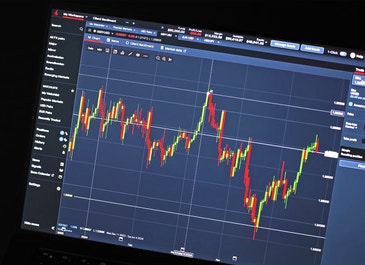The Forex industry, known as Forex or FX, is a dynamic environment where currencies are exchanged globally. To achieve that fast-paced industry, traders should understand how to acknowledge traits and use powerful strategies. Reliability in Forex trading is not almost making repeated gains but also about managing chance and establishing to changing market conditions.

Understanding Forex Tendencies
A tendency in the Forex market describes the common direction by which a currency pair is going over a particular period. Developments can be upward (bullish), downhill (bearish), or sideways (ranging). Recognizing these styles is essential for making informed trading decisions.
Uptrends happen when rates regularly make larger peaks and larger lows. Downtrends are recognized by decrease levels and decrease lows. In a sideways industry, cost techniques inside a selection with no apparent direction, and that often happens during intervals of industry uncertainty.
Traders use trendlines, going averages, and specialized signs to help identify and confirm trends. Knowledge the energy and direction of a pattern allows traders to align their strategies with the market's momentum.
Key Forex Trading Methods
Several trading techniques can help traders obtain regular results in the Forex market. The effectiveness of each strategy depends on the trader's experience, time responsibility, and chance tolerance.
Trend-following technique
This approach involves entering trades in the direction of the prevailing trend. Traders using this technique frequently count on instruments like moving averages, MACD, and ADX to ensure trend strength. The strategy is to trip the tendency for provided that it stays unchanged, leaving when signals of reversal appear.
Breakout technique
Breakout trading centers around entering a situation when the cost pauses out of a definite selection or pattern. Traders search for essential support and opposition levels and place trades when value activity breaches these degrees with solid volume. That strategy works well in areas preparing for an important move.
Range trading technique
In this method, traders make the most of value bouncing between recognized help and resistance levels. It is most reliable in sideways markets wherever there is number clear trend. Oscillators like RSI or Stochastic signs are often used to recognize overbought or oversold conditions within the range.
Scalping technique
Scalping requires creating numerous small trades through the duration of the time to take advantage of little cost movements. That technique needs fast decision-making, high awareness, and minimal purchase costs. Scalping can be effective for experienced traders with use of fast performance platforms.
Chance Administration for Uniformity
No strategy can promise gains without appropriate chance management. Traders must establish their chance patience and set stop-loss and take-profit degrees for each trade. A typical principle is not to chance more than one to two percent of trading money about the same position.

Maintaining a trading record helps monitor efficiency, identify styles, and make necessary modifications to strategies. Mental control and discipline are similarly essential in avoiding impulsive decisions that can cause losses.
